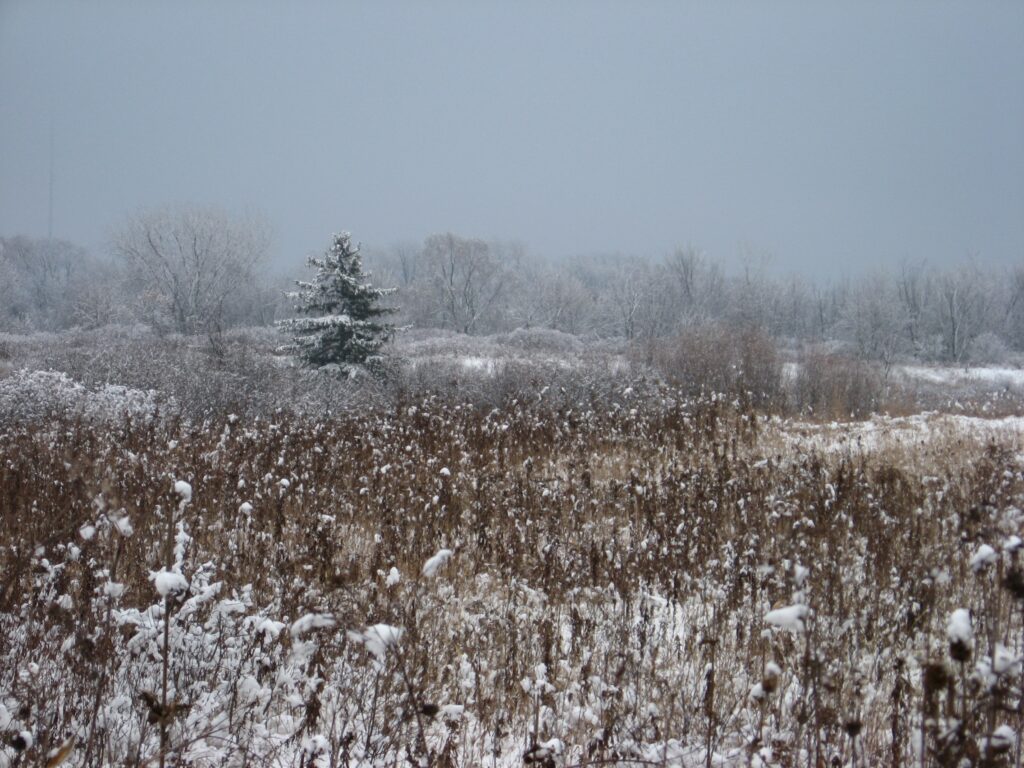By Dan Buckler, DNR Urban Forest Assessment Specialist, Madison, daniel.buckler@wisconsin.gov or 608-445-4578
 Sunlight fades, then sunlight grows. With those celestial rhythms surrounding the winter solstice, millennia of ritual have been shaped. Winter is historically an extremely dangerous time, in a way unfathomable to those of us with furnaces and stocked pantries. But at the winter solstice, something important happens: ever so gradually, the days start to lengthen, and there is hope that a bright, warm world will return.
Sunlight fades, then sunlight grows. With those celestial rhythms surrounding the winter solstice, millennia of ritual have been shaped. Winter is historically an extremely dangerous time, in a way unfathomable to those of us with furnaces and stocked pantries. But at the winter solstice, something important happens: ever so gradually, the days start to lengthen, and there is hope that a bright, warm world will return.
That’s where evergreens enter the picture, plants that have been incorporated into solstice rituals since time immemorial because they show that life can continue through hardship. The foundational value of every Christmas tree, mistletoe sprig and holly branch is thus a symbol for life and the promise of rebirth comes with the winter solstice.
There’s no way to place a value on symbolism. It would seem almost profane in this context. But of course, we appreciate evergreen trees in ways beyond their symbolic and aesthetic benefits, important though those are.
For example, we often cite infrastructure advantages of trees due to the way that they can reduce harmful or costly things, such as air pollution or stormwater. The extent to which a tree could provide these services is mostly a result of its surface area. Tree size is important in producing more surface area, of course, but so is the size and texture of the foliage. And conifers tend to have a lot of surface area, despite how small individual needles or scales might be.
Add in the fact that they can “work” year-round and that some evergreens, like spruce and fir, tend to have a dense branching structure, and you have a situation in which evergreens are great producers of those oft-cited ecosystem services.
Conifers in Wisconsin are also especially important in providing cover for birds and other wildlife in the winter. A bird-friendly winter garden should always include some evergreens.
In our municipally managed spaces, evergreens are relatively uncommon. Of the 885,000 trees in the Wisconsin Community Tree Map, only 6.5% are evergreen species, with arborvitae and blue spruce neck-and-neck for the most managed species within that database (Eau Claire and Menomonee Falls have the most evergreens at over 2,000 each).
The uncommonness of evergreens is no surprise, for reasons practical (e.g., you won’t find many spruces planted along streets), and ecological and demographic (evergreen conifers are much more prevalent in the north, where there are smaller communities and fewer managed trees in their inventories).
It is also no surprise that the highest evergreen tree cover is in communities scattered across northern Wisconsin, according to the National Land Cover Database.
Perhaps those communities are the best places to celebrate these special trees, or perhaps it’s the opposite? Maybe to truly understand the power of evergreen as a symbol, you need to see one in isolation against a bleak, wintry backdrop. I am particularly fond of a spruce standing defiantly in the middle of Havenwoods State Forest in Milwaukee, a messenger from the sun, reminding us that things will be okay.
Here’s to you, evergreens. How lovely are thy branches!
